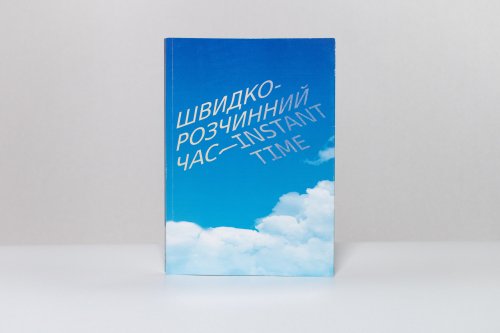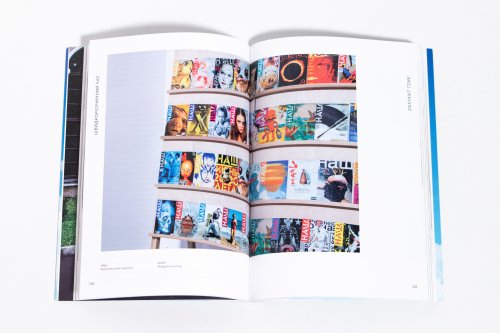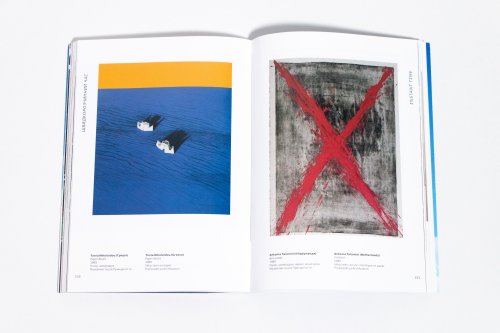INSTANT TIMEExhibitions
-
-
Search for an exhibition
-
- Search
Name
INSTANT TIME
Catalogue editors
Anna Pohribna, Solomia Savchuk
Texts
Piotr Armyanovski, Olena Afanasyeva, Yuliya Vaganova, Lia Dostlieva & Andrii Dostliev, Anatol Zvizhynsky, Gamlet Zinkivsky, Georgiy Kasyanov, Vlodko Kaufman, Max Kovalchuk, Rostyslav Koterlin, Yuriy Koch, Olha Pohribna-Koch, Tetyana Pavlova, Sergiy Petlyuk, Julia Polunina-But, Ihor Podolchak, Nadia Prygodych, Kateryna Tykhonenko, Krolikowski Art
Introductions to the cities
Vira Baldyniuk
Design and layout
Iryna Kostyshyna
Ukrainian copyediting
Vira Baldyniuk, Iryna Danchenko, Oksana Schur
Proofreading
Larysa Minchenko
English translation
Christina Kuzmych, Yastyna Kravchuk, Nina Tararueva
English copyediting
Rachel McVey
Photos of the exhibition
Maksym Bilousov, Yevgen Nikiforov, Bohdan Poshyvailo
Print coordination
Anna Zatelepa
Instant time is a metaphor for Ukraine’s fundamentally new experience in the 1990s. Time sped up in the first years of independence, changes and decisions came quickly, information and phenomena spread like lightning, and disappeared equally so. The information vacuum filled spontaneously, without any filters or barriers, and absorbed everything that fell into its space. A craving for the new grew on the backdrop of the influx of ersatz, poor quality substitutes and surrogates, that, nonetheless, genuinely inspired and captivated, and sometimes provoked the emergence of unique phenomena, and not only on a local scale.
The exhibition narrative consists of stories of 9 cities and regions of Ukraine. The group of curators create a cross-section of the socio-political context of their cities, focusing on stories about places, people and phenomena, exploring their fears and dreams in these historical conditions. Memories and interpretations create a fragile fabric of reality that brings to light what people in the ‘90s felt and how they changed.
Social and personal dimensions are complemented by optics of different generations of artists. The views of the participants of those cultural events stand side-by-side with the voices of those who were born in the ‘90s and are making contemporary art today. This approach allows us to construct a larger picture of the ‘90s and to expand the usual perspective with a new set of ethics — looking at a world built by adults through the eyes of children.
Instead of answering the question: “What were the ‘90s?” the curators and artists construct a space for experimenting on their own memories, to put forth an important question: “What remains today of the ‘90s?”
Events and phenomenon don’t disappear completely, don’t dissolve without a trace, they sink into habits and continue in practices today. In remembering the ‘90s we try to understand the present. We not only recreate the sensory story of the ‘90s, we analyze what has been preserved in our memory and become important to us.
Asia Tsisar, Viktoriia Bavykina
Mystetskyi Arsenal. Kyiv, 2018



